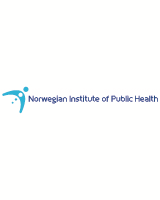Prevention of Suicide. Part 1: Psychotherapy, Drug Treatment and Electroconvulsive Treatment
Authors
Lars Mehlum, Gudrun Dieserud, Øivind Ekeberg, Berit Grøholt, Liv Mellesdal, Fredrik Walby, and Kurt I. MyhreBackground The Norwegian Directorate for Health and Social Affairs requested the Norwegian Knowledge Centre for the Health Service (NOKC) to do a health technology assessment (HTA) of the effects of interventions by the psychiatric health services for the prevention of suicide. The HTA will be part of the basis for national guidelines for suicide prevention.
Methods The work was carried out by a review team of external professionals. A systematic literature search was performed using the databases Medline, Embase, PsychInfo, Cinahl and Swemed. The literature was evaluated in a stepwise manner according to general principles of HTA. At step 1 the professionals reviewed 3854 abstracts, 171 articles were reviewed for relevance at step 2 and at step 3 internal and external validation of the 83 articles found relevant was done by the whole group.
Results and discussion Ten high-quality articles and 52 articles of moderate quality were included. Many of the randomized controlled studies described cognitive behaviour therapy and related forms of psychotherapy and treatment with antidepressants, but other types of psychotherapy and drug treatment were also investigated.
There are a number of problems with the external validity of the literature.
The majority of the studies were done in countries with cultures and ways of organizing the health care system quite different from Norway. Many of the interventions were of short duration and the number of patients included was small, therefore there was a risk of overlooking important effects (type II error). The inclusion and exclusion criteria were not always well described and in a number of studies individuals with high risk of suicide were not included.
A number of studies were performed with patients hospitalized in general hospitals after episodes of deliberate self harm. It is not clear to what degree the results by these studies can be used by psychiatric health workers.
The small number of patients make it impossible to extract meaningful results for subgroups who may be presumed to have different needs and respond differently to interventions. In addition, in many studies patients with comorbidity like substance abuse were excluded, in clinical practice suicidal patients commonly have extensive comorbidity.
Conclusions Psychotherapy Some studies report that psychotherapy reduces suicidality more than the treatment given to the control group. This is the case with cognitive behaviour therapy, dialectical behaviour therapy and day care with psychodynamic psychotherapy to patients with borderline personality disorder, and multisystem therapy given to young persons.
Drug interventions In the majority of studies of antidepressants, the study drug reduced depression, suicidal ideation and in some cases suicide attempts more than placebo. However, the patients in the studies generally had low risk of suicide and suicidal persons had often been excluded.
Lithium significantly reduced the incidence of suicide and suicide attempts.
Some studies reported that suicidal behaviour in patients with schizophrenia was reduced more through the use of clozapine than by other neuroleptics.
Electroconvulsive therapy No methodologically acceptable study on the effect of ECT on suicidal behaviour was found.
General limitations The majority of the studies described short-term interventions and had methodological weaknesses.
The majority of studies excluded patients at high risk for suicide.
The majority of studies included few patients, thus clinically significant effects may have been overlooked (type II error).
